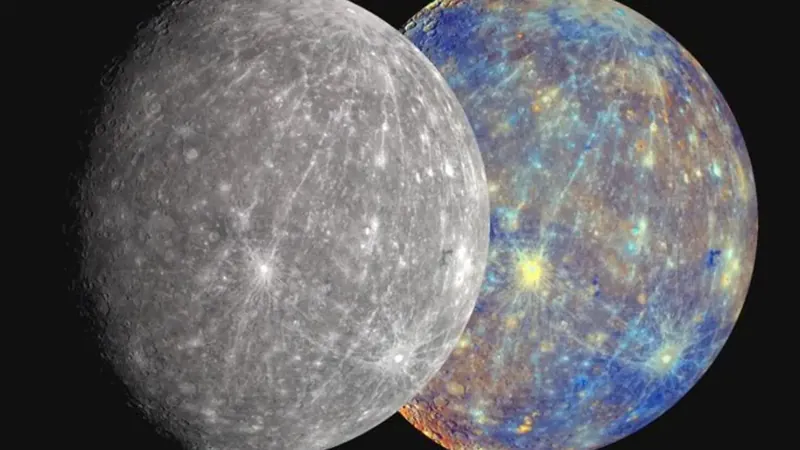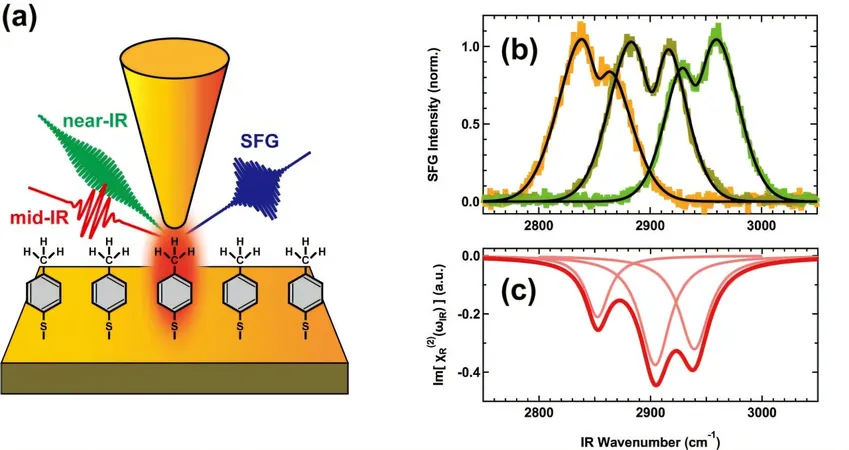
Could a Cataclysmic Collision Explain Mercury's Mysterious Core?
2025-04-19
Author: Daniel
Mercury’s Enigma: The Iron Core Conundrum
Mercury, the smallest planet in our solar system, has always been a source of intrigue for scientists. Its dense composition, heavily dominated by a colossal iron core that makes up about 60-70% of its mass, sets it apart from siblings like Earth, Venus, and Mars.
The Game-Changing Collision Theory
Researchers from the Paris Institute of Planetary Physics have unveiled a compelling theory to explain Mercury's unusual structure. They propose that a massive, grazing collision with a protoplanet decades after the solar system's formation led to the stripping away of much of its outer mantle, leaving behind a surprisingly large iron core.
Simulating the Collision: How It All Went Down
Utilizing advanced Smoothed Particle Hydrodynamics (SPH) simulations, the study reimagined a scenario where an early Mercury—roughly 2.36 times its current mass—collided with a protoplanet much larger than itself. At lightning-fast velocities, the crash resulted in a mass residue closely aligning with Mercury’s known composition, showcasing a core rich in iron.
Mercury’s Journey: From Far-Reaching Orbit to Cosmic Neighbor
This hit-and-run collision likely took place in a busy area between the orbits of Venus and Earth, suggesting that Mercury may have originally formed farther from the Sun before migrating inward—a concept supported by other simulations indicating that such events were not uncommon in the dynamic environments of protoplanetary disks.
Diverse Impact Scenarios: What are the Odds?
In contrast to traditional models that depend on smaller impactors or massive targets—situations that happen less than 2% of the time—the hit-and-run collision is far more probable. A separate analysis from Alice Chau and her team explored various impact scenarios, which underscored the significant effects of collision angles and velocities, demonstrating that both single and multiple impacts could lead to Mercury's distinctive iron-rich mantle.
The Volatile Elements: A Clue to Late-Stage Impacts?
Interestingly, the presence of potassium and thorium on Mercury’s surface points to a more recent collision rather than earlier catastrophes that would have vaporized such materials. NASA's MESSENGER mission data supports this claim, revealing that these volatiles were surprisingly retained.
BepiColombo's Mission: The Next Frontier of Exploration
The upcoming BepiColombo mission, set to arrive at Mercury in November 2026, promises to shed new light on these theories. A collaborative effort between the Japan Aerospace Exploration Agency (JAXA) and the European Space Agency (ESA), it aims to scrutinize Mercury’s surface and internal structure—potentially providing key evidence that could validate or challenge the collision hypothesis.
A Quick Look at Alternative Theories
While some theories suggest that Mercury could have formed from iron-rich materials without a significant collision, or that it lost its mantle through a series of small impacts, these are largely viewed as less plausible due to their rarity in simulations.
Conclusion: New Findings, New Perspectives
The findings from the current research align with earlier studies while also revealing disparities stemming from different methodologies. As the BepiColombo mission furthers our understanding, the mystery of Mercury's formation may soon see groundbreaking revelations.



 Brasil (PT)
Brasil (PT)
 Canada (EN)
Canada (EN)
 Chile (ES)
Chile (ES)
 Česko (CS)
Česko (CS)
 대한민국 (KO)
대한민국 (KO)
 España (ES)
España (ES)
 France (FR)
France (FR)
 Hong Kong (EN)
Hong Kong (EN)
 Italia (IT)
Italia (IT)
 日本 (JA)
日本 (JA)
 Magyarország (HU)
Magyarország (HU)
 Norge (NO)
Norge (NO)
 Polska (PL)
Polska (PL)
 Schweiz (DE)
Schweiz (DE)
 Singapore (EN)
Singapore (EN)
 Sverige (SV)
Sverige (SV)
 Suomi (FI)
Suomi (FI)
 Türkiye (TR)
Türkiye (TR)
 الإمارات العربية المتحدة (AR)
الإمارات العربية المتحدة (AR)